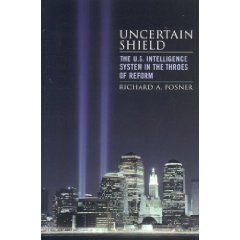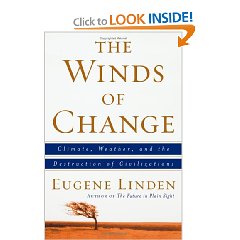
On the Left: Lying About Oral Sex–and on The Right:? 10 Big Crimes,
The Republicans set the stage for hard-ball when they actually impeached President Clinton, not for having oral sex with an intern, but for lying about it. This book lists ten specific documented reasons for impeaching President Bush:
1. Stole Florida election in 2000.
2. Lied on Iraq to Congress, the Public, and the United Nations.
3. 9-11 Cover-Up and Obstruction of Justice.
4. Violated Rights of Citizens including Habeas Corpus.
5. NSA Program to Listen to Citizens without Warrant.
6. Violated International Treaties Including Geneva Convention.
7. Actively Encouraged, as a Policy, Use of Torture.
8. Gross Negligence on Hurricane Katrina.
9. Iraq Contract Corruption–Bremer “Lost” $8 billion in cash, sole source awards, and gross negligence in managing the peace.
10. Stole Ohio election in 2004.
This book is not just an indictment on the specifics, it is also a very useful primer for citizens on the purpose and process of impeachment, which is a last resort intended to restore the checks and balances of government–it is in essence, supposed to be reserved for out of control Presidents whose high crimes and misdemeanors threaten the security and prosperity and morality of the Nation.
Having set the bar so low in attacking President Clinton (see Kenneth Becht's “Just the Facts: A Case for Impeachment” (December 1997)), the extremist Republicans have absolutely no basis for objecting to the impeachment of the President in February 2007. I for one do not favor impeachment–I prefer containment with the threat of impeachment.
This book (there are others, this is the one that caught my eye in the airport) comes at a timely moment, as we go into the summer leading to the November 2006 Congressional elections. The Independents and swing voters are clearly regretting their re-election of Bush (but as a moderate Republican, I think Bush has been better at radicalizing America, Kerry would simply have muddled through), and there is an excellent chance that the Republicans will lose control of the House and perhaps even the Senate. This book, and the case it makes, should be required reading for everyone running for election in November 2006, and the litmus test for their election should not be “do they FAVOR impeachment,” but rather “do they favor containing the President from running further amok by holding the impeachment card high?”
The book reminds us in passing that President Bush was fearful of testifying to the 9-11 Commission in public or under oath. He testified to a handful of the Commissioners, with Vice President Cheney at his side, and concealed from the public.
The book points out that the full cost of the Iraq war and subsequent occupation, an occupation that the President just announced will go one for several more years, is likely to go over two TRILLION dollars, inclusive of lost income by the troops, lifetime medical costs for tens of thousands of amputees and traumatized individuals (remember, Gulf I, a cake walk, gave us 264,000 veterans on FULL DISABILITY), and interest on the debt (which is now at 9 TRILLION, not counting 40 trillion in future unfunded obligations).
The book names Cheney, Rumsfeld, Rice, and Gonzalez as subject to impeachment, but again, as a moderate Republican, the idea of Nancy Pelosi replacing Bush as President is even more repugnant. This book inspires me to hope for more Independents such that the Democrats may slightly outnumber the Republicans and be the de jure majority, but NOT be the actual numerical de facto majority. We need to put the “swing” into Congress, and not leave it at the voting place.
The appendices are of passing interest. The key point of this book is that discussion of impeachment is neither radical nor academic. It is real. America has been through the ten high crimes and misdemeanors itemized above.
If we do not take note and correct this in 2006 and 2008, we are no better than one of the 44 dictators that our Administration continues to support in return for cheap natural resources at the expense of foreign publics that will eventually overwhelm us. Jonathan Schell in “Unconquerable World” documents how there are not enough guns in the world to force our way–restoring “America the Good” is the one path to peace. Holding this President accountable–not necessarily through impeachment–is a good way to set the stage for honest and thoughtful elections in November 2006.
The Bush Tragedy
The One Percent Doctrine: Deep Inside America's Pursuit of Its Enemies Since 9/11
Vice: Dick Cheney and the Hijacking of the American Presidency
Crossing the Rubicon: The Decline of the American Empire at the End of the Age of Oil
The Broken Branch: How Congress Is Failing America and How to Get It Back on Track (Institutions of American Democracy)
Breach of Trust: How Washington Turns Outsiders Into Insiders
Running On Empty: How The Democratic and Republican Parties Are Bankrupting Our Future and What Americans Can Do About It
The Battle for the Soul of Capitalism
9/11 Synthetic Terror: Made in USA, Fourth Edition
Collective Intelligence: Creating a Prosperous World at Peace








